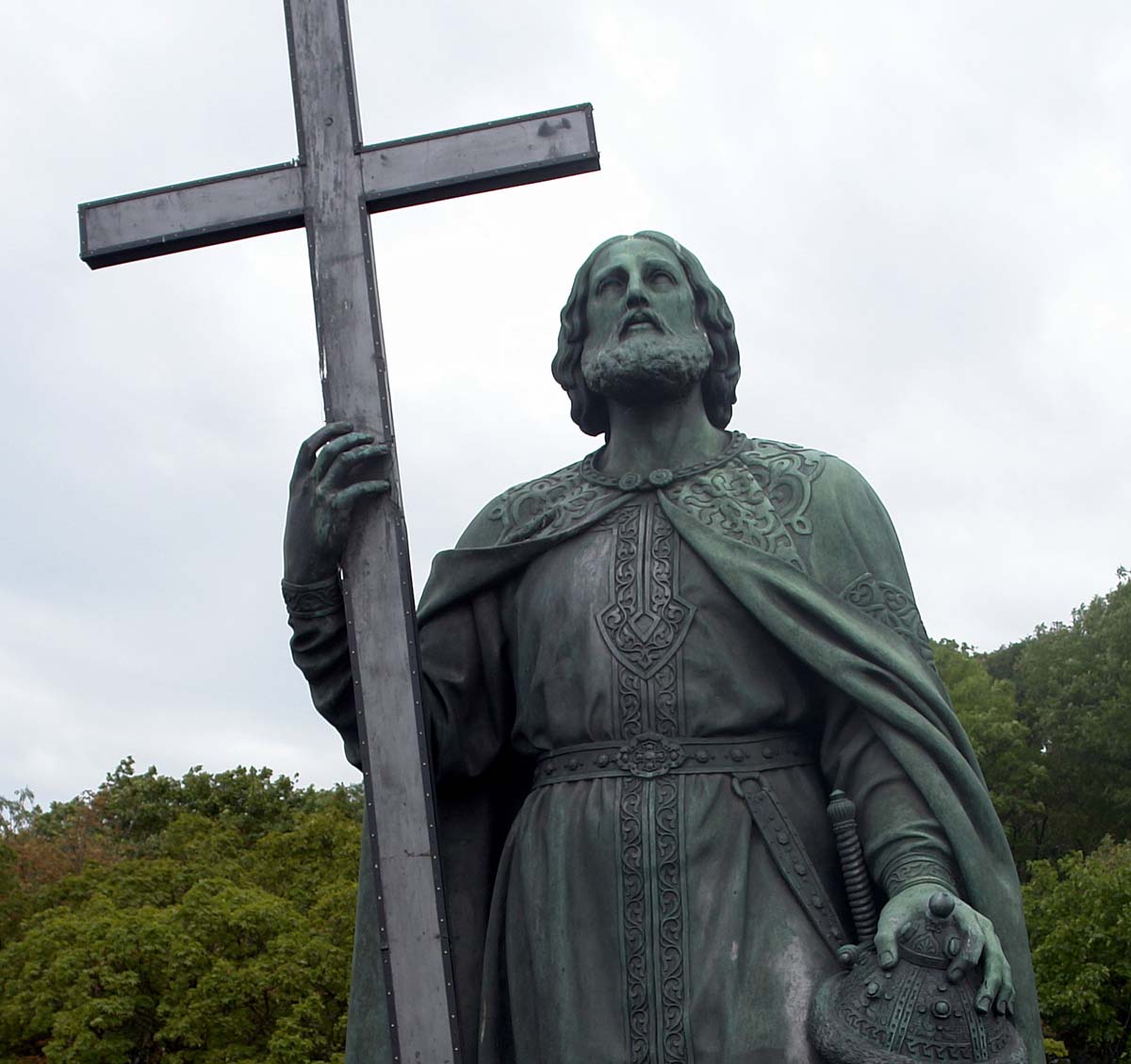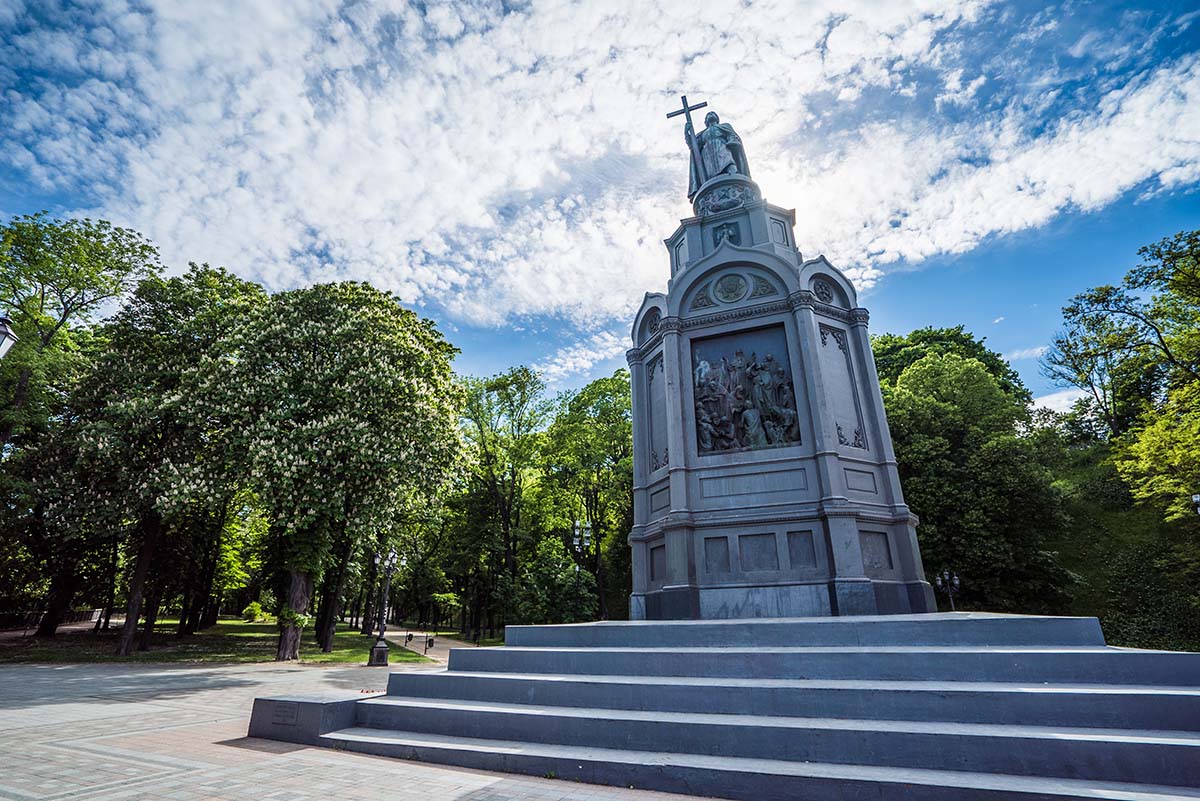Before the installation of the monument, the territory was occupied by the vineyards of Mikhailovsky Golden-Domed Monastery. However, numerous floods of the Dnieper caused severe subsidence of soil under the vineyards and provoked a series of landslides on Vladimirsky descent. This caused indignation among local authorities, since a lot of money was invested in dressing the Vladimir descent in stone. And to prevent this from happening again, it was decided to strengthen the slope by establishing a park there. The park was named “Vladimirskaya Gorka”, since according to legend it was here that Prince Vladimir Svyatoslavich once baptized the people of Kiev. In 1843, the rector of the Imperial Academy of Arts, Russian sculptor Vasily Demut-Malinovsky submitted for consideration to the emperor “A project for the construction in the city of Kiev at the highest steepness of the corner of Alexander Mountain, above the very place where the baptism of the Russian people took place – a monument to St. Equal to the Apostles Prince Vladimir” and Nicholas the First approved the project. Sculptors and architects such as Pyotr Klodt (statue of Vladimir), Alexander Ton (pedestal) and the author of the project himself (bas-reliefs) worked on the creation of the monument.
A 4.4-meter bronze statue of the Baptist of Rus’ Vladimir, depicted in a cloak with a large cross in his right hand and a grand ducal cap in his left hand, rises on a 16-meter pedestal that has the outline of an octagonal chapel in the pseudo-Byzantine style on a square stylobate. The brick pedestal and stylobate are lined with cast iron slabs. The total height of the monument is 20.4 meters. The sculptural details of the pedestal were cast at the Dugninsky plant near Kaluga, the statue was cast in St. Petersburg, personally by Peter Klodt in his workshop. The statue was transported from St. Petersburg to Moscow by train. At that time there was no railway towards Kyiv, so the statue was transported further by horse traction.
During Soviet times, the monument became one of the few Kyiv monuments built before 1917 that managed to survive. Although, attempts were made to remove all religious decorations from the monument. Probably not without success, since in 1953-1954. (for the 100th anniversary) the monument required restoration. After restoration, the monument did not change significantly. It became a kind of calling card of Kyiv, and in 1988 it even appeared on the Soviet commemorative coin on the occasion of the 1000th anniversary of the Baptism of Rus.


